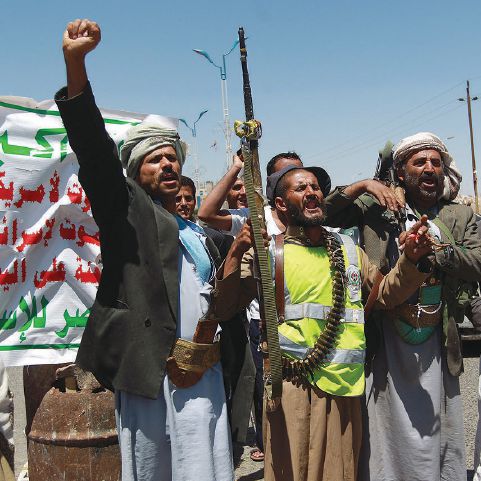The Roots of the Yemeni Crisis
Ali Ibrahim/Asharq Al Awsat
13/11/14
Ever since the union of North and South Yemen was declared in 1990, political conflicts and differences in the Arabian Peninsula’s poorest country have never ceased, reaching their climax in the 1994 bloody civil war between former president Ali Abdullah Saleh and the Southern secessionist leaders, who eventually turned their backs on the union and attempted to secede once again.
The union between these two regimes—who differ widely, both politically and economically—was not carefully worked out. It almost appeared to be an attempt at ignoring the country’s domestic problems (though, at the time, this escapist attitude applied more to the South than the North). For the Yemeni Socialist Party, this union—which came on the back of a bloody power struggle that saw tanks deployed on the streets of Aden in 1986—came as an insurance policy guaranteeing its remaining in power, particularly since, at the time, the Soviet Union was no longer capable of providing it with support and funds. As for the North, the union was a political opportunity not to be missed.
This whole porcelain enterprise of uniting North and South resembles the futile act of using beautiful colors to paint a house with cracked walls, an empty roof, and shaky foundations—to thunderous public applause. In any case, it took a mere four years for the house to collapse, partly due to the authorities. Alliances shifted and the friends and partners of yesterday—the Yemeni Socialist Party and its leadership—became today’s enemies. A new alliance between Saleh and the Al-Islah Party soon emerged, with radical groups being used to subjugate Southern leaders who used all kinds of weapons—including Scud missiles—in their war with the Yemeni government. Eventually, Saleh won and the union continued. But the whole thing was botched up, and no efforts were made to lay any firm foundations to secure its continuity or to make all sides feel they had emerged victorious following the bitter struggle. As such, the sense of injustice and unfairness, whether justified or not, continued to emerge every now and then, particularly since the public uprising of the Yemeni people in 2011 and the subsequent emergence of the Southern Al-Hirak secessionist movement and the political vacuum that emerged.
Moreover, during the five years in the run-up to the 2011 uprising in Sana’a, nearly three wars broke out between Saleh’s government and the Shi’ite Houthi movement, claiming hundreds of lives and inflicting heavy material losses. Now it seems that the enemies of the past are the allies of today, with the objective being to gain power in the country. This has led the US and the international community to impose sanctions, comprising travel bans and asset freezes, on Saleh and two Houthi leaders.
Everyone had high hopes about the Gulf Initiative, which sought to secure a peaceful and organized transfer of power and prevent the country from slipping into chaos and collapse following the public protests calling for Saleh’s departure. His deputy, Abd Rabbuh Mansur Hadi, eventually emerged to lead the transition process under regional and international sponsorship. But now it seems that, just like the case with the union, the colors were beautiful but the house remained ridden with cracks and fissures—and still without firm foundations. Consequently, it was natural that Yemen would turn into an arena open to foreign powers interfering in its destiny and attempting to move the country in certain directions.
The crisis in Yemen has its roots in a series of accumulated negative political practices and clashes of interests that have divided more than united Yemen’s disparate factions. On the other hand, no serious efforts were made to address the country’s problems, particularly economic development, which remains Yemen’s biggest problem. No progress will be achieved in Yemen without regional cooperation and support. Such support needs political stability and politicians capable of rising above their narrow interests and personal vendettas.





















